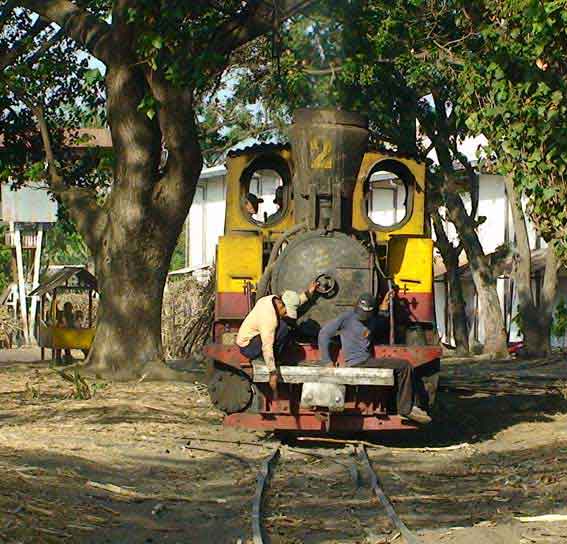
Updated 19
September 2008
A Steamy Java 2008 Double DVD is now available.
Details
of our 2009 Java tour plans are at:
http://www.internationalsteam.co.uk/tours/java2009.htm
For the first
part of the blog, go to Blog I
For the post-tour blog, go to Post-Tour Blog

Merican 2008 (compare this with the old shot at the top of Blog I).
Conclusion: According to the number grabbers, we have seen over 300 steam locos of which more than 50 in steam. (Of these 50, eight were steamed especially for the tour group, one more was in steam at Tersana Baru for a Japanese group visiting the next day and one more at Asembagus was steamed in the morning rather than as usual in the afternoon.) The 300 locos/50 in steam numbers, make Java the second steamiest real steam loco destination left on earth and it may become the first within the next few years as working steam in China declines. In addition, the stationary steam boys report 500 stationary steam engines seen.

The tour gets a write up in the local news of 1 August 2008.

Dave, Geoff and Bryan pose with their photo.

Rob (right) and TC thank the two drivers and their assistants before the buses head for Surabaya airport.
1 August, Hotel Rosali WiFi, Situbondo
The last full day of this tour. Tomorrow the group heads for Surabaya and home
although some of us will remain a few days in Situbondo to chill out post tour.
There may be a few post tour blog posts as I make my way back to Jakarta for
my flight on 8 August. Today we had two additional locos in steam. At Asembagus,
they gave us No. 10 for the charter as the loco that had been working earlier
in the week (No. 8) had failed. Raising steam and turning the loco on the triangle
both took time and this resulted in a late departure around 11 am of our charter
train. We shortened the event and went just beyond the first junction on the
north line so we could get back to Olean for 1 pm to see the real action there.
Loco No. 1 was working the train from the same fields on the north line at Olean
as previous days but it was the 3rd different loco in 3 days on this working
(Nos. 1, 4 and 7 seen in action).
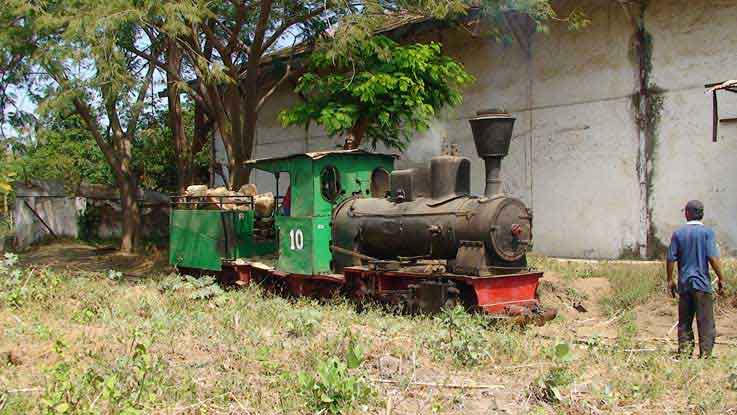
Asembagus No. 10 finally turned on the triangle and was almost ready for our charter.
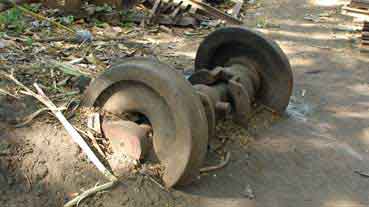
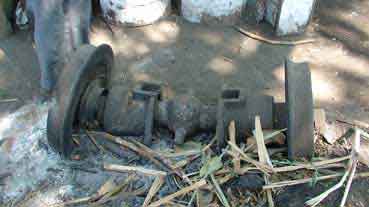
A lot of the O&K steam locos we
saw have Klien-Lindner front and rear axles giving a certain amount of articulation
to negotiate tight curves. This is achieved by driving via the centre of the
axle not directly to the wheels. In these photos of an abandoned Klien-Lindner
axle, we can see the inner axle (with eccentrics driven by the con rods) and
the hollow outer axle on which the wheels are mounted. The con rod from the
engine drives the inner axle and the movement is transmitted to the centre of
the hollow outer axle through the two centre pins. The wheels rotate but are
free to articulate about the centre of the axle.
I think that there is something very wrong with the axle unit in the photo you
have provided. Perhaps the left hand wheel has fractured away from the hollow
axle. (This description from John Browning. Thanks, John.)
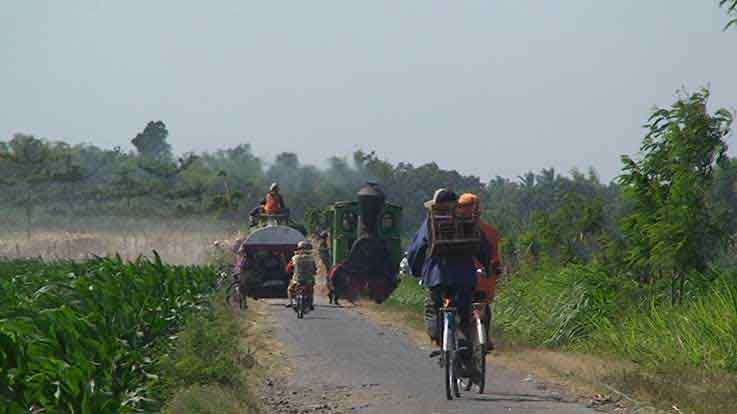
Olean No. 1 and train cross the road on their way back to the mill. The cage-carrying pigeon fanciers have released their birds and are returning to collect them.
31 July, Hotel Rosali WiFi, Situbondo
A perfect day at Olean. No. 4 came out early at around 8 am with the empties
and we photographed the cane loading before an early lunch. After lunch, the
water buffalo brought the loads up to the line around 12 and loco No. 7 came
out to work them back to the mill. After a lengthy pause outside the mill (allowing
plenty of time for the bus group to get inside the mill and to the yard for
the arrival), No. 7 came into the yard and shunted before retiring to the shed
just before 4:30. It was a long, hot day but quite amazing to see scenes which
have not changed for around 100 years. I hope the pictures below give some inkling
of what it was like.

No. 4 pulls the empty lori past a distant volcano.

The local ducks do a run past on the way to their field.

The two buffalo strain to bring two cane lori up off the temporary track.
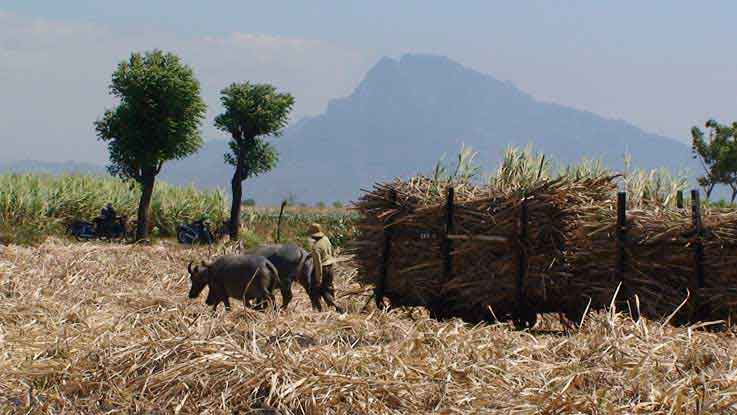
Another pair of buffalo work loads out of the field.
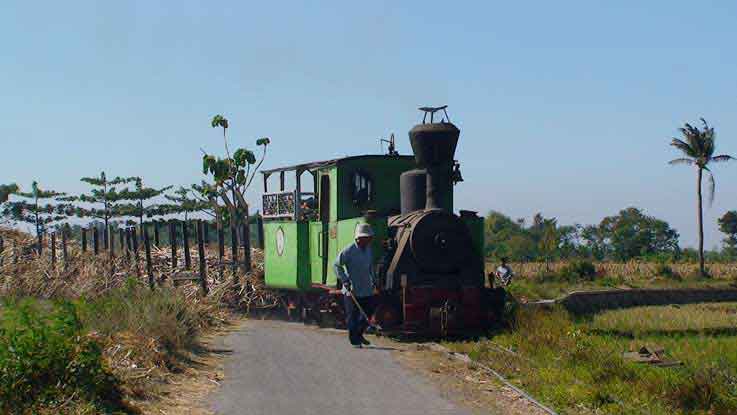
With the sander in action, No. 7 struggles across a road crossing.
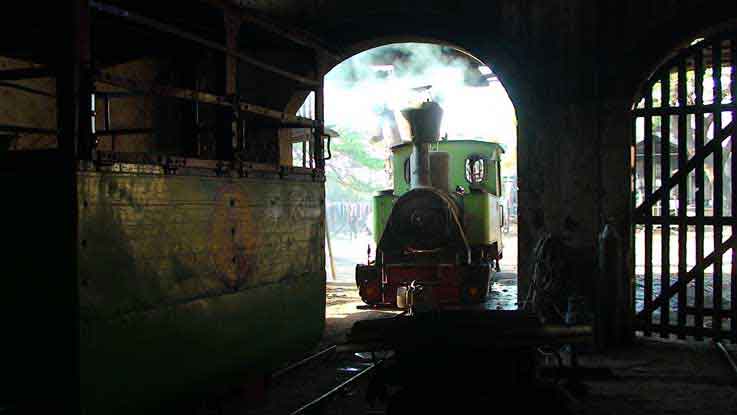
After shunting the cane in the mill yard, No. 7 retires to the shed.
30 July, Hotel Rosali WiFi, Situbondo
Olean Mill this afternoon had one early steam cane train back to the mill around
14:00 hauled by loco No. 4 which needed several blow ups on its short run back
on the north line. We followed this with a visit to Pasir Putih for a swim and
the sunset.
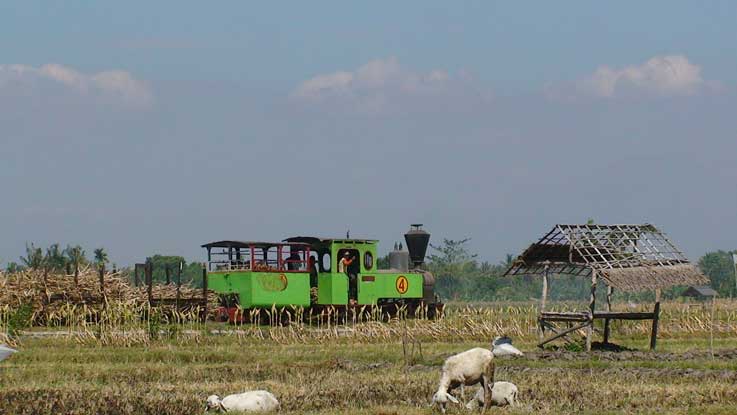
No. 4 returns to the mill with the only steam-worked cane train of the day.
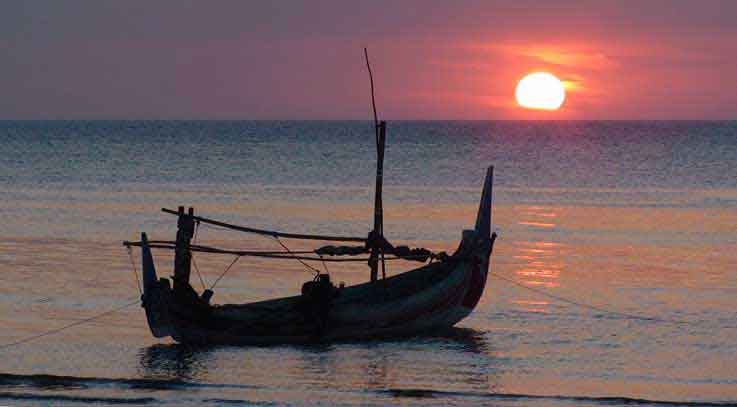
Fishing boat at Pasir Putih.
29 July, Hotel Bandung Permai, Jember
One of our few cloudy days but we got enough sunny breaks to eventually get
some good pictures of our charter train at Semboro. The crews have to be called
back from retirement and these days don't want to go far. However, they were
persuaded to go as far as the second village after the river and canal bridges
and when asked to pose on a cane train, pushed it back round the corner and
showed that No. 29 is still up to hauling cane. Earlier, we saw the 2 fireless
do their whole repetoire hauling a few cane lori the last few metres into the
mill, pushing mud trucks and charging with steam. Mallet No. 15 was also in
steam for us and came with us to the mill yard exit for photos but shed staff
are no longer confident that this loco is up to hauling the enthusiasts' charters
to the fields. This will be the only working mallet seen during the whole trip.
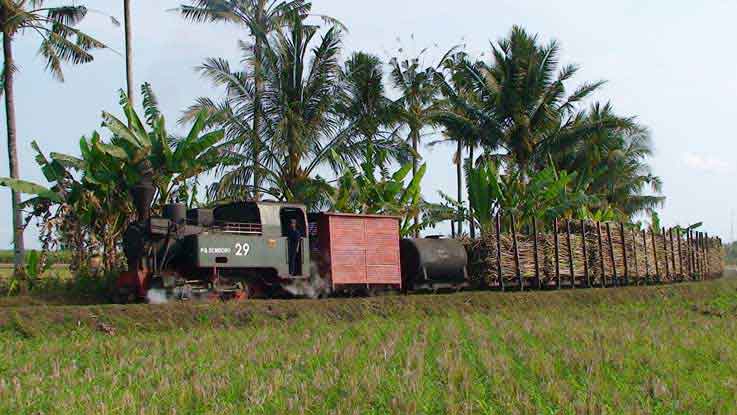
No. 29 coupled up and hauled this train a short distance.
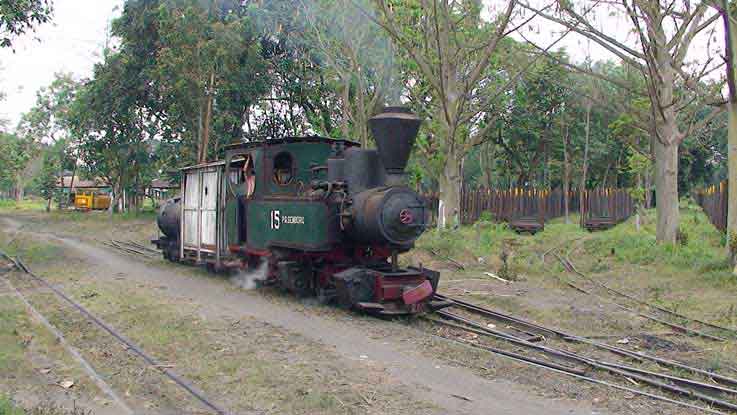
When the sun went in - No. 15 in steam and moving in the yard but no longer up to line work.
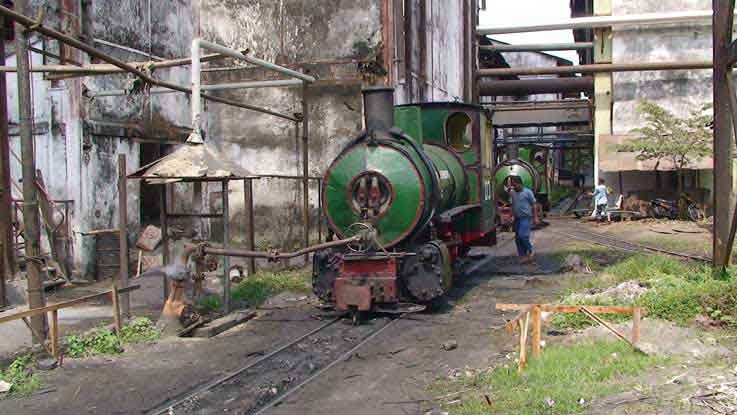
O&K fireless No. 3 charges while sister loco No. 2 waits to haul cane into the mill. These are the only real working steam locos at this mill.
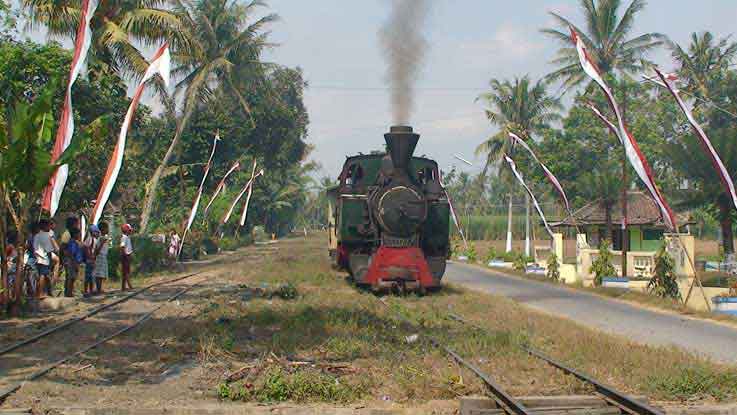
The flags are out for Indonesian National Day in the villages on the estate. Note the double track main line.
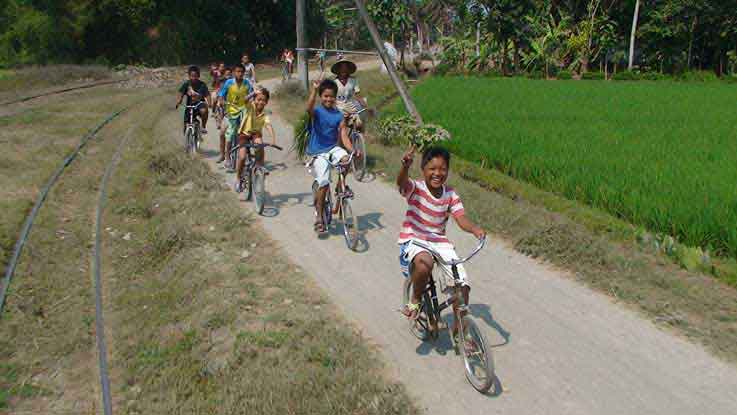
Local boys on their bikes chase the train as it heads to the river and canal bridges.
28 July, Hotel Ratna, Probolinggo
Just arrived in Probolinggo after visiting Merican (again) and Gempolkrep (where
we found 4 locos in steam, 3 in use). More to follow, WiFi permitting.
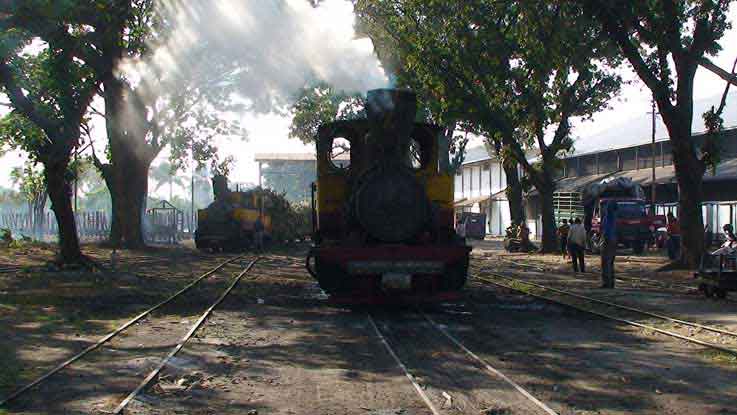
No. 8 and No. 2 on the morning trains at Merican.
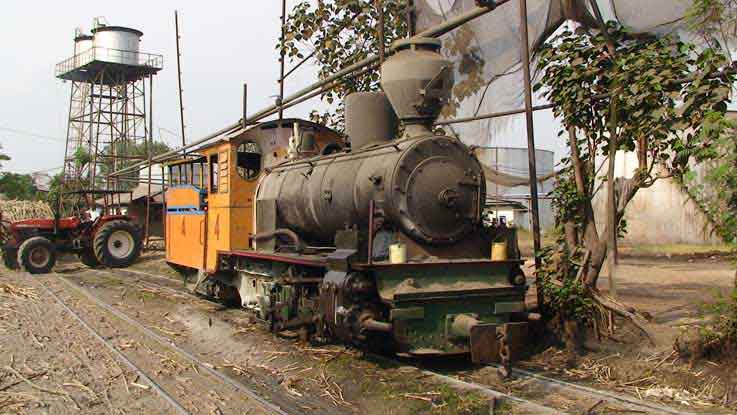
No. 4 - one of the two larger locos that pull the cane the final metres to the mill at Gempolkrep.
27 July, Hotel Penataran, Kediri
Brief visits today to 3 mills - Pagottan, Kanigoro and Merican. I know each
mill from better days but what we saw was; Pagottan - two large Luttermöller
tank engines No. 6 and No. 7 plus several small diesels in action with all other
steam locos including the other Luttermöller No. 8 out of use on shed.
The steam locos propel the cane within the mill yard. No. 6 has acquired a set
of mean bull bars for its propelling role. Kanigor - only No. 6 in action along
with at least one diesel and tractors. No. 1 was under repair and there would
normally be 2 steam locos working here. Merican - only 2 locos (No. 2 and No.
8) in use from the truck yard as well as tractors. The locos were burning wood
so we cancelled our night visit expecting less fireworks than with bagasse.
Normally, there would be an extra loco in steam here working the empties from
the mill but not today.
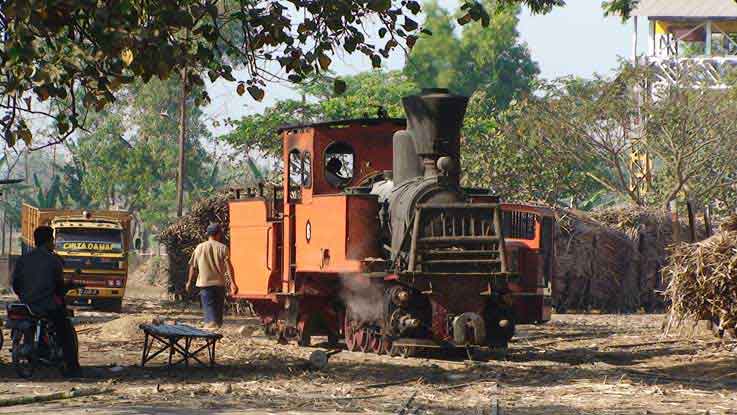
Pagottan No. 6 with its new bull bars. Steve Noon points out that the loco received a shorter boiler off of a smaller 0-8-0T and the bull bars were added at that point.
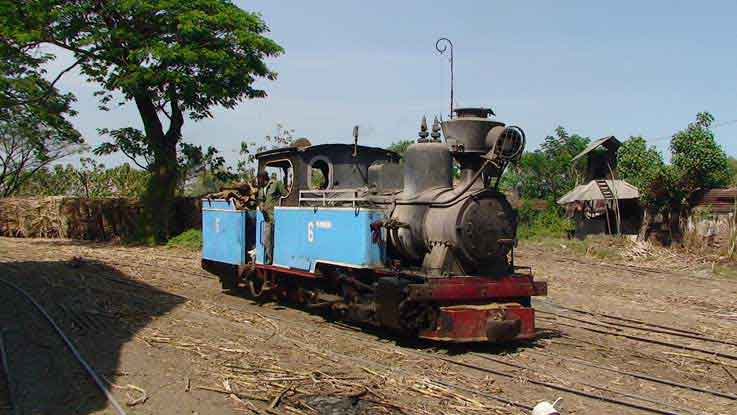
Kanigoro No. 6
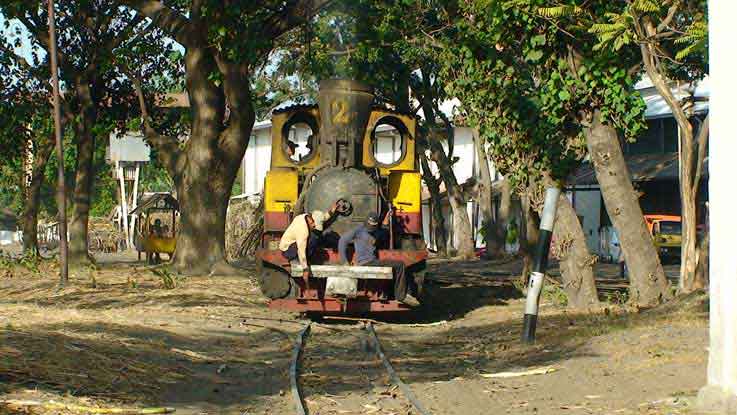
Merican No. 2 departs the truck yard for the mill.
26 July, Hotel Kartika Abadai, Madiun
From Cepu today via Purwodadi mill and then after lunch in Madiun, to Rogosari
for the afternoon. This mill still uses 2 steam locos for a very short shunt
but can also steam its unique O&K jackshaft drive loco. Those who remember
Madiun with B50 2-4-0s to Ponoroggo, D52s in Madiun station, field work at Pagottan,
Kanigoro and Regosari and shunting at Purwodadi and Sudhono, find Madiun today
somewhat disappointing. However, there is still working sterm at 4 mills and
it makes a convenient overnight stop along the way.

O&K 0-8-0T jackshaft drive loco Salak
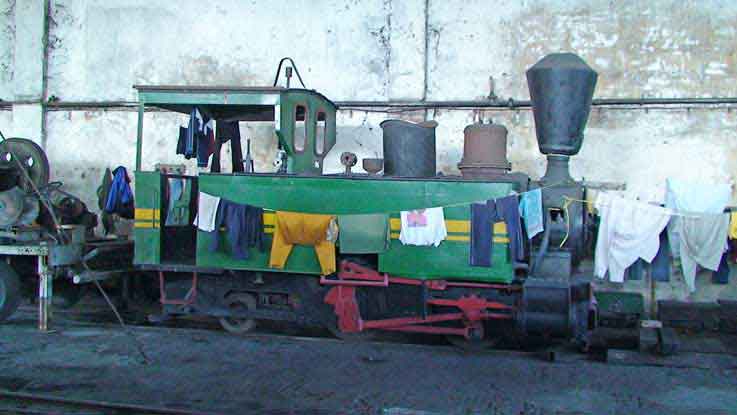
Regosari shed - old locos have lots of uses including as washing lines.
25 July Mega Bintang Sweet Hotel, Cepu
We had the first rail fan trip to the forest since the bridge outside the log
yard was repaired late last year. Perhutani (the Forest Bureau) in Jakarta have
taken a serious interest in the tourism potential of Cepu and are starting to
apply pressure on the local staff to shape up. Our trip was a complete success
although some arrangements were adjusted slightly during the day. We had the
small D&B loco shunting around the depot and in the log yard and the Berliner
0-10-0T Bahagia all the way to the arboretum/picnic site beyond the road bridge
on the Cepu - Blora road. Hopefully, Cepu will now be back on the group circuit
of rail attractions in Java as it certainly provides a great day out.
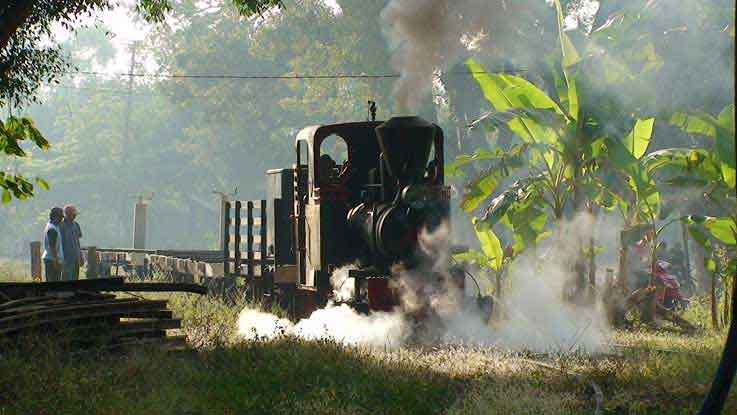
The D&B loco outside the depot early morning.
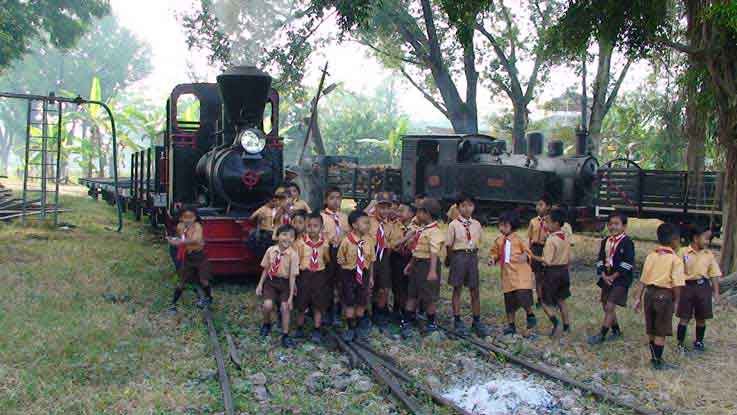
Informal line up of children and the two locos.
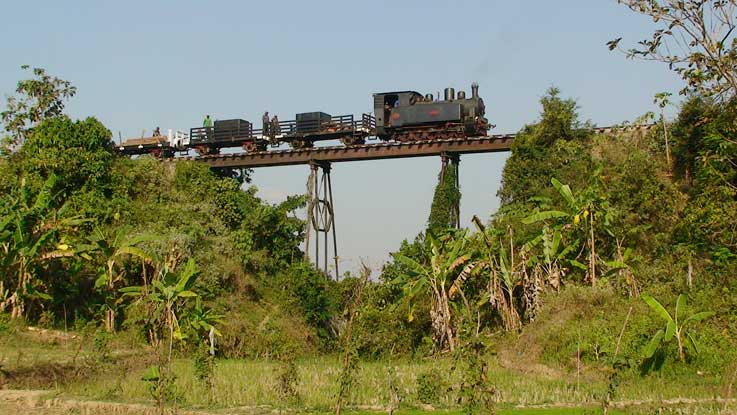
Bahagia on the high river bridge. A sight we didn't expect to see again.
To see the trip schedule, go to http://www.internationalsteam.co.uk/tours/java2008.htm
Contact John Raby:
![]()
This is not a hotlink. You need to type this address into the 'To' line of your email.
Go to my index page.